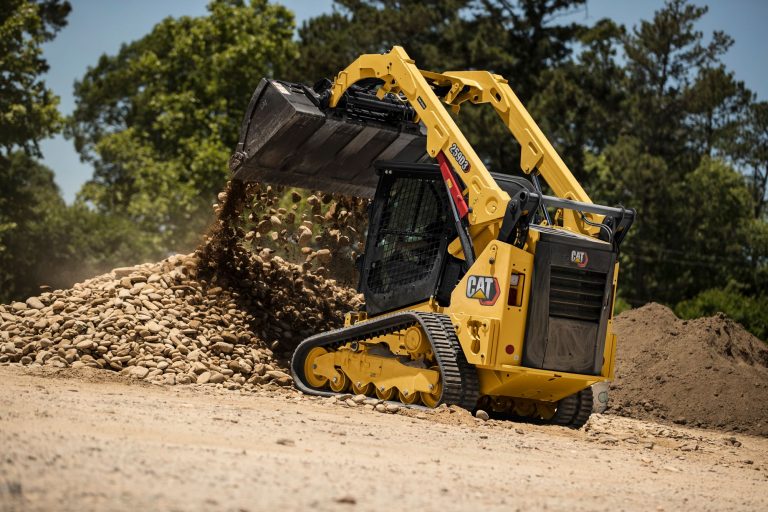Starting a construction business is an exciting and overwhelming process. But, if you’ve made it through the tedious registration paperwork and administrative tasks, you’re probably ready for the fun part – starting to look at equipment.
There are basic things like your standard tool set and personal protective equipment (PPE), but you will need more depending on the projects you plan to take on – especially if you are specializing in a particular construction service that is beyond setting up doors and other furniture.
Additionally, have you considered whether you want to rent or buy the equipment? Many people think it’s better to buy their equipment, but are you ready to handle maintenance costs and liable for potential damages? Continue reading to discover the equipment you’ll need when starting a construction company and whether buying it is the ideal choice for you at the present moment.
Excavators
An excavator is the most commonly seen vehicle in construction. It consists of a cab on a rotating house, a boom, a stick, and a bucket. They come in several sizes and types, with either wheels or tracks to help them maneuver the job site. They’re most widely used for digging, but the bucket can be replaced with another tool – like a drill – making excavators multi-functional.
John Deere excavators
These are among the most popular pieces of equipment used by construction companies. They are used for digging out large holes and for other tasks that require heavy lifting.
These machines have been designed with the safety of the operator in mind and they also come with a number of features that make them easier to operate. The John Deere excavators are one of the most popular brands on the market today.
Hoppers
Hoppers are an often overlooked necessity on the construction site. They’re inexpensive and allow you to quickly and safely dispose of material waste.
Plus, many construction workers find that hoppers are more favorable than running around with wheelbarrows or leaving waste piles on the edge of the job site. The most popular are bottom dump hoppers, which allow you to release the materials in a safe and controlled manner.
Backhoe Loaders
Backhoes are similar to excavators since they’re used for digging and moving dirt. However, several things make them different from excavators. For example, the backhoe is smaller and better for mid-sized construction or farming projects.
On the other hand, the excavator is much larger and more commonly seen on bigger scale construction sites. Many people prefer the backhoe loader because it can be more versatile with its capabilities.
Bulldozers
The bulldozer is used to move massive amounts of dirt, asphalt chunks, and other matter that could be in the way of a construction project. They’re set on giant tracks that allow them to navigate rough, uneven terrain.
Many construction workers use them to level, demolish, and clear debris before laying concrete for roads or structural support. Therefore, they make an excellent addition to your inventory if you plan on taking up projects that require a lot of demolition.
Cranes
A crane is used to lift and place heavy loads of material. They’re often used for building skyscrapers but can be found in other large-scale construction projects as well. They’re equipped with the recognizable boom arm and a hook to carry materials.
In addition, the crane is fitted with a counterweight that helps prevent dangerous accidents and drops. Remember that there are various types, so do some research before choosing a crane for the project at hand.
Graders
The grader is used to level the earth, creating a flat surface to pour concrete safely and evenly. Many people assume that graders and bulldozers do the same job, but if you look at the structure, graders cannot plow copious amounts of dirt and material. Instead, graders can be used after the bulldozer, as they often give more precise leveling results.
Rollers
A roller is a must-have if you plan on taking up projects that involve building houses or other large structures. So once you’ve leveled the earth with a bulldozer and grader, you’ll need the roller to pack down the dirt.
Without compacting the soil, you risk shifting or settling, which can cause the building to sink or crumble. When you are shopping around for a roller, you’ll want to find one heavy enough to get the job done correctly and put your mind at ease. Typically, they can weigh up to 20 tons.
To Rent or to Buy?
Construction companies in their infancy often want to buy everything, so they have it on hand before starting a job. However, it is probably not wise to invest in a bunch of heavy equipment initially. There are high maintenance costs, and potential damages could be enough to put a company out of business if they don’t have enough money to cover them.
So, to start, it’s best to rent out equipment on an “as-needed” basis. Then, once you have enough jobs under your belt and your company has a stable safety cushion, you can go ahead and start buying your equipment.
You may not have realized everything you need to do when starting a construction company. From writing your business plan to obtaining insurance – the administrative tasks can be a headache. However, once you’ve taken care of those things, you can start considering equipment and whether to rent or buy. While most construction projects require the basics, don’t overlook any other equipment that may be helpful to your business.

